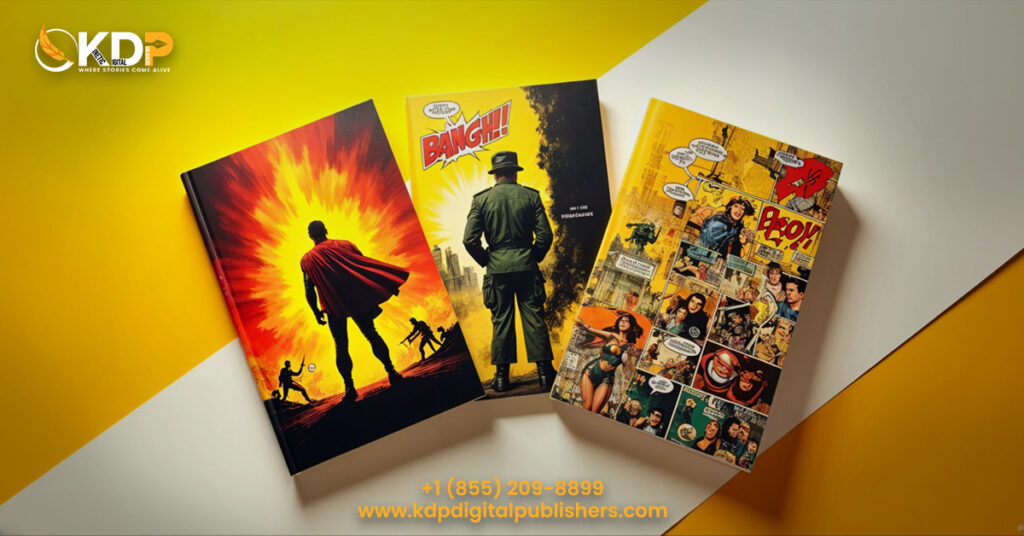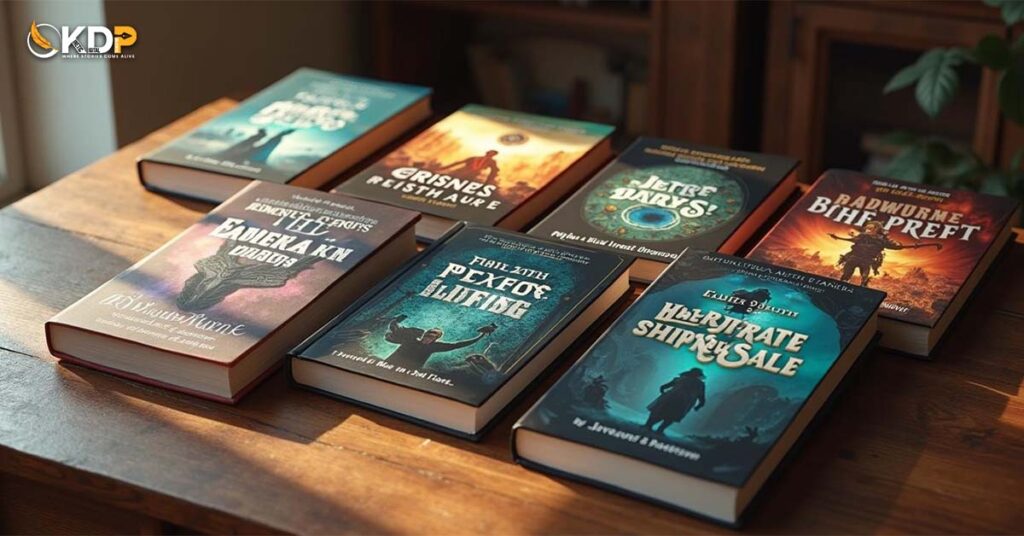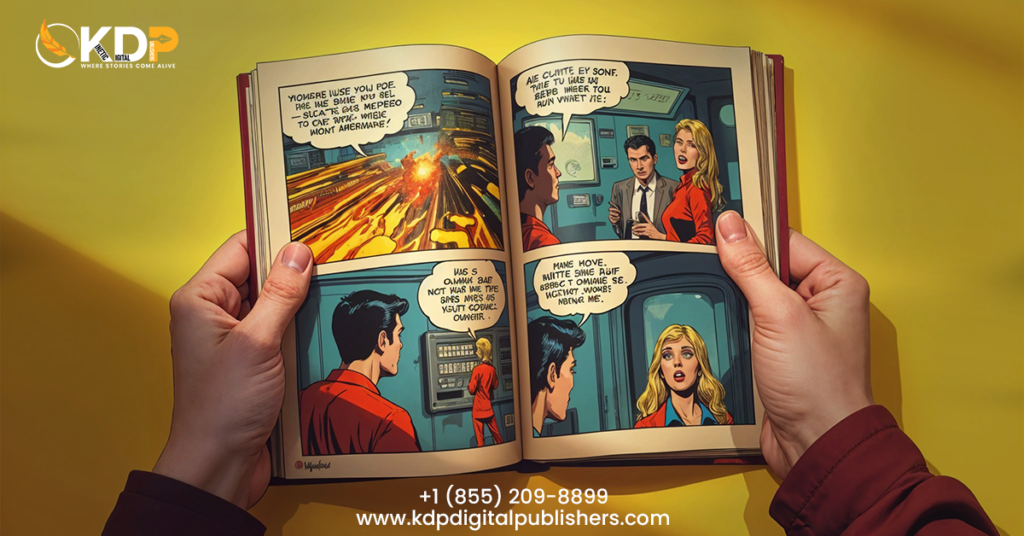how to write a comic book
So, you’ve got a brilliant idea with a catchy plot and a few extra essentials like the hero, the villain, and also an entire universe, or maybe a plotline that’d make Stan Lee grin all the way in his grave. If you’re willing to learn how to write a comic book, then, hey, welcome to the club. But spoiler alert, that’s mostly the easiest bit. Don’t be surprised if you see a fifty-year-old sitting in their yard with their favourite comic book in their hand, because that’s something pretty common.
Comic books, unlike your regular fictional or non-fictional books, have a timeless appeal that is ageless. In this day and era, where self-publishing has become the go-to option for many authors, why don’t we get you started on how to become a comic book writer, since almost everyone can.
Comic Book Structure 101
Before we take the leap into panels and punchlines, let’s pause and gather a basic understanding of a comic book’s format. Comic books are way different than novels or movies. They’re a unique storytelling medium used widely by authors to display their imagination using everything from visuals to the pacing.
Comic Storytelling Fundamentals
In comics, panels are your control points. By setting the tone, action, and tempo, a single wide panel can make all the difference, making the moment feel epic. Think about it for a spare second, a chase scene can be given a sense of urgency by a series of fast cuts. With panels, you’re creating moments that come to life on paper, not just writing scenes.
Think of a comic book as your own playground where everything can be altered by the placement, size, and arrangement of panels. Without using a single word, you can deliver impact, manage flow, or cause chaos. Don’t just think about what happens in each panel. Think about how panels relate to each other. How do they build tension? How do they surprise? The ultimate secret to great storytelling is that it occurs page by page, not just line by line.
8 Steps to Create a Comic Book That Hits
Writing a comic book is all about keeping your concept in place while also acquiring the right skills, and honestly, the whole process can be mentally and physically demanding for many but the outcome and the results make it worth it at the end of the day. Let’s walk you through a step-by-step guide that’ll make your journey on how to write a comic book way easier than before.
1. Find Your Big Idea
Contrary to the belief that every legendary comic book starts with a spark, it might be a character who wields a crazy amount of power or a dystopian universe at the brink of extinction. Whatever it may be, make sure it’s something you stay committed to till the end. While you’re brainstorming, ask yourself these questions:
- What message do I want to tell?
- What genre am I leaning into, sci-fi, horror, superhero, slice of life?
- What’s different about my take?
Remember that you don’t need to come up with the entire plot in one go, all you need is a notebook on hand to jot down dialogue, sketches, and comic ideas when they come to mind and a valid reason for your comic book to exist.
2. Script Before Sketch
It’s tempting to start drawing right away, but don’t rush the process. before you draw a single line, it’s extremely important to lay off a strong foundation. Think about all the comics you’ve read and loved so far. does their power only come from the art or the storyline?
Your script is the blueprint that drives emotions through only the visuals and tempo. Keeping that in mind, your only goal should be to lock the narrative first and foremost. But if ignored, this can result in disjointed plotlines, mismatched panels, and expensive redraws that take up your time and effort.
Keep the following elements in mind when writing a comic book:
● Setting:
Keep the storyline setting clear and compelling. A few vivid examples of actual comic settings (e.g., “a neon-drenched Tokyo in 2099” or “a sun-scorched wasteland ruled by cats”) could help the worldbuilding section pop even harder.
● Characters:
The characters of your story are like the heartbeat of your story, and it’s your job to make them memorable by giving them their flaws and quirks. Ask yourselves, what traumas motivate your heroes or what values give your villains a terrifyingly human quality, because great characters are conflicted, not just cool.
● Plot:
Try to keep your plot organized, making sure it follows a natural sequence. To avoid plot holes, a short visual showing how rising action builds (e.g., a simple arc diagram or key beat progression) could help more visual learners.
3. Study the Art Before You Draw It
The world of comic books is vast, and no matter how much you think you know about comics, there’s still a sea of knowledge to learn from. Similarly to how you would expect a soldier to know their weapons, an author should also acquire a deep knowledge and understanding of how comic books actually work. If you’re serious about how to write a comic book, explore different styles, eras, and genres. You can also start off by reading legendary runs or indie darlings.
From researching different bookshelves to how the pros use angles or layout, whatever way you decide to know better, either way, gaining knowledge will help you steer clear of rookie blunders and give your comic the polish it requires to be noticed.
4. Outline Your Story Arc
It’s time to get serious because we promise you, nobody’s interested in reading a comic book that meanders. This phase is mostly about how the story of your comic unfolds from panel to panel and page by page. Most authors out there start off by thumbnails (these are rough sketches to help visualise)
● Classic Three-Act Structure:
Beginning (Setup): Introduce the hero, the world, and the conflict.
Middle (Confrontation): Raise the stakes. Test the hero. Twist the plot.
End (Resolution): In the final act, conflict takes place and resolution comes to rise, ultimately bringing the story to its conclusion.
● Issue-by-Issue Breakdown:
Once you’ve got the big arc all figured out, break it down into issues (or chapters). What happens in each? What’s the cliffhanger that makes readers need the next one? Also, if you’re writing a limited series, you’ll probably end up with only 4-5 issues, so remember to make every single page count.
5. Write a Comic Script (Yes, a Script!)
Here’s where many authors stumble and tumble because, unlike novel scripts, a comic book script is different. When it comes to format, while there isn’t a “right” format you should follow, most scripts out there include:
- Page Number
- Panel Descriptions
- Dialogue
- Captions/SFX
Let’s not just call it quits with only the basics; think about how many panels fit on a page without cramming the visuals, and also the rhythm of dialogue. Is your exposition dragging the pace? Are your characters speaking like real people? It’s up to you solely how you set the foundation for your comic book, covering up every beat or puncline. Try not to rush this part. Go back and read your script, read it out loud.
Writing a powerful comic script means you’re building a map that your artist and your readers will follow from start to finish. The stronger your script, the smoother the rest of the process becomes.
Here’s an example:
Page 1
Panel 1: A rainy city street. The hero walks alone, hands in pockets.
Caption: It always starts like this.
Hero (thought): Another damn night.
6. Collaborate With an Artist (Unless You’re Both)
If you’re not handling your artwork yourself, with the help of the right people, your story will reach its full potential. Everything improves when you collaborate with letterers, artists, and possibly even co-creators. These partners are crucial to transforming your idea into a visual powerhouse; they are not merely supporting actors.
Behind Every Great Comic Is a Killer Team
The secret weapon to successful teamwork is clear communication. Be receptive to professional advice and adaptable enough to change your script if you think it helps your plot. Your job as a writer is to write a compelling script, but your artist will give your words visual life. Decide on your tone and style in advance. Have a must-have element or a reference? Raise your voice. Give your artist the freedom to improve the story, though; they might even take it to new heights.
Oh, and don’t underestimate the value of narration flow or sound effect integration. These play a huge role in giving your comic clarity, and you don’t want to mess that up.
7. Focus on Visual Storytelling
After laying out the basic groundwork, it’s time to let the steam off a bit and get on with what you’re actually here for: making a comic. This is the part where your story comes to life and begins to take shape panel by panel, whether you’re using pencils, styluses, or digital apps. If you lack the necessary tools, there’s no need to obsess over it. Instead, make use of what suits you and your comic. Along the way, a vast network of creators, forums, and tutorials is available to assist you in leveling up.
Here’s your creative roadmap:
● Sketch It Out:
Start with loose lines. If you see yourself leaning more towards traditional publishing, sketch in pencil, and if you’re thinking of going digital, then make sure to put a block in your outlines in order to make space for captions and dialogue.
● Ink Like You Mean It:
Adding bold lines and texture will give your comic book’s scenes a lot of dimension and also make your characters pop. It’s imperative to stick to the basic visual rules. This will ensure the style stays sharp.
● Color With Intention:
Colors in comic books aren’t just there for the aesthetic appeal. Your desired color palette serves the purpose of adding emotional depth to your storytelling by building a world that feels cohesive and alive. Make sure to use the right colors for each atmosphere and character.
● Letter for Impact:
First and foremost, make sure your text is easy to read. You can do that by choosing a font that’s easily readable (or a hand lettering style) and make sure the size works across different devices or printed formats.
8. Edit Like a Beast
Comic books are a sacred combination of art, text, and layout, which ultimately gives us room for editing to make all the changes necessary. When you’re editing, make sure to do it ruthlessly but effectively. Don’t be afraid of making a few cuts or rearrangements if something doesn’t feel right.
Key Areas to Focus On:
- Storyflow and Pacing: Does your story gain traction? Are scene changes seamless? Does the reader get bored or confused at certain points? Every page of a well-edited comic should flow naturally into the next, free of abrupt turns that would pull the reader out of the narrative.
- Dialogue and Narration: Keep the narration and dialogue sharp, since narration is key to visuals. Be mindful of repetitiveness.
- Visual Consistency: Be consistent with your designs from one panel to another. Visual continuity plays a vital role in immersing the readers emotionally with the characters.
Bonus Tips for Comic Book Writers
Let’s be real, you’ve probably stuck by this far only because you’re actually in for the long haul and truly feel the need to master how to become a comic book writer. Let’s look at a few tips that’ll save you tons of resources and also make comic book writing easier.
Plug Into the Community
You’re not alone in this journey, so you don’t have to act alone. There are plenty of comic forums and creator groups you can be a part of and connect with people who speak your language and hustle. Connecting won’t only bring you good vibes, but it can also open doors, leading to powerful partnerships, and honestly, who wouldn’t want that?
Read Beyond Your Comfort Zone
Don’t just stay limited to your favorite go-to reads, and instead explore genres that bring a challenge, making you step out of your comfort zone, such as sci-fi, slice of life, horror, or even humor. All these genres have one thing or another to teach.
Practice Relentlessly
Surely, you’ve probably heard of the saying before: “practice makes perfect.” It’s true! There’s no easy way out when you’re aiming for perfection. The more you write, sketch, and revise, the closer you bring yourself to reaching beyond limits. You can also give new formats a shot. Remember that it’s okay to mess up once in a while. What matters is that you don’t give up halfway.
Make Noise With Your Comic
Readers are necessary for even the most renowned stories, and your comic merits recognition. Now is the moment to start showing up, without apology. Create an offensive reader strategy. Recognize where your audience hangs out, whether it’s on comic forums, Instagram, local stores, or conventions, and intentionally meet them there. Create a slim, targeted marketing plan that capitalizes on your advantages, whether they be captivating images, clever captions, or outright charm.
Comic Conventions
Careers are made at comic conventions, which aren’t just for the major leagues. Reserve a table. Print your zines. Speak to everyone. Be passionate. That unadulterated, face-to-face energy? People remember it because it’s electric.
Additionally, don’t undervalue your local scene. Independent comic book stores are frequently insatiably hungry for new and creative content. Enter with assurance, make your comic pitch, and cultivate connections. Even better, make their area your stage by offering to sign or read.
The bottom line is that you’ve made something exceptional, so you might as well show it off. Who knows how many lives it may end up changing?
Here’s the Mic-Drop
You certainly don’t need a fancy degree or a job at Marvel in order to write a comic book. Anyone who says otherwise is wrong. What you do need is some discipline, vision, and guts. Legends of comic books weren’t born with a publishing deal in one hand and a pen in the other. They began somewhere, chasing ideas that seemed too big to fit on a single page, writing late-night scripts, and sketching in notebooks. Talent isn’t the only thing that sets the dreamers apart from the doers. It’s the unwavering determination to finish a task, regardless of how difficult it begins or how long it takes.
Comic book writing is a dream come true for anyone. But the people who do it? When everyone else expected them to finish strong, they were the ones who dared to start messy and persevered through the plot holes and rejections. Someone out there at this very moment is waiting for your comic book, so why not give them one?




















